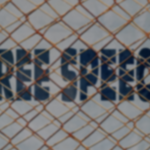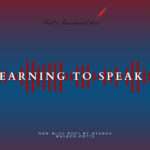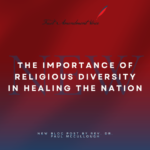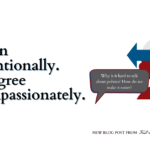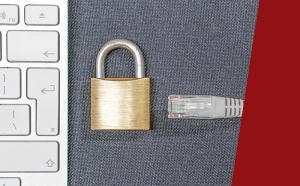
by Dan | Aug 26, 2020 | Uncategorized
 Have you heard of the Open Technology Fund (OTF)? It’s a U.S.-based organization promoting Internet freedom around the world by offering resources that mitigate authoritarian regimes’ attempts to censor the Internet and unethically and/or unlawfully surveil people online.
Have you heard of the Open Technology Fund (OTF)? It’s a U.S.-based organization promoting Internet freedom around the world by offering resources that mitigate authoritarian regimes’ attempts to censor the Internet and unethically and/or unlawfully surveil people online.
The OTF impacts as many as 2 billion people worldwide, but it recently had to pause most of its projects and programs (49 out of 60) when $20 million of its Congressionally-approved and allocated funding was unexpectedly held back.
While this organization is primarily focused on supporting pro-democracy initiatives and journalist protections in countries beyond the U.S., the recent OTF controversy provides an excellent opportunity to learn more about the U.S. federal government’s capacity for funding and influencing global media projects:
What’s Going on with the Open Technology Fund?
The U.S. Agency for Global Media (USAGM) is designed to promote and support U.S. interests abroad through various media efforts such as training journalists and creating and distributing high-quality media content through Voice of America.
The Open Technology Fund is related to the USAGM because it receives grant funding from the agency, but controversy erupted in late July when President Trump withheld $20 million in Congress-approved funds from the OTF. This news came shortly after CEO Michael Pack took control of the USAGM and attempted to replace several USAGM and OTF leaders with his own appointees (a decision that was later blocked by the U.S. Court of Appeals).
In addition to personnel replacement concerns, Axios reported that the USAGM deputy chief of staff Diane Cullo misled the bipartisan House Foreign Affairs Committee by claiming $1.6 million was transferred to OTF in July. OTF officials had reportedly not received any of their allocated funding for July or August, and the July funds didn’t appear in OTF’s accounts until August 19 – six days after Cullo told the House Foreign Affairs Committee that OTF had already received their money in back in July.
The discrepancies between OTF reports and USAGM statements to both media and bipartisan Congressional committees are arguably cause for concern, especially in wake of OTF’s ongoing inability to support nearly 80% of their programming.
Why is the OTF Important for Internet Freedom?
Those of us living in the U.S. are fortunate to have freedom of expression inscribed within our Constitution, access to a relatively free and open Internet, and countless high-quality, ethical journalists to keep the public informed. However, in some other countries, journalists work alongside the government as little more than propaganda pushers, and the Internet can be swiftly censored or shut down altogether if people are circulating information deemed unfavorable or dangerous by those with political power.
The OTF is critical for supporting the development and dissemination of tools that help individuals in other countries circumvent Internet blocking, as well as researching and developing solutions for enhancing online privacy, cybersecurity initiatives, and other anti-censorship efforts.
If the OTF does not receive the funds that Congress has already allocated to the group, then many of these valuable programs will be paused indefinitely. This could hinder U.S. interests when it comes to supporting democracy, Internet freedom of expression, and non-state journalists, which means more should be done to protect First Amendment-related organizations’ access to approved funding to ensure their efforts may continue uninterrupted and without unnecessary delays.
Join Us for Our First Amendment Freedoms & Technology Panel on Sept. 16
Have you marked your calendars for our upcoming symposium webinar series going on between September 14-17? On September 16 at 2:45pm EST (11:45am PST), we’re hosting an exciting webinar featuring the CEO of Maestro Games Yael Swerdlow as the moderator and former FBI Chair Kenneth Cassine, former COO of Change.org Jen Dulski, and bestselling author and podcaster Abel James as the panel speakers.
Check out this link: https://www.eventbrite.com/e/first-amendment-voice-national-symposium-tickets-114132639798
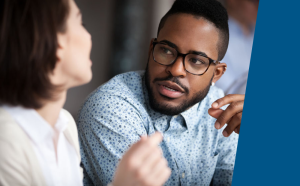
by Dan | Aug 12, 2020 | Uncategorized
 When talking about politics and other controversial conversational areas with someone who has different beliefs than you, do you feel as though they’re listening to understand what you’re saying or simply listening and waiting for their chance to respond? More importantly, are you genuinely listening or are you listening just long enough for them to stop talking so you can bring up your own points?
When talking about politics and other controversial conversational areas with someone who has different beliefs than you, do you feel as though they’re listening to understand what you’re saying or simply listening and waiting for their chance to respond? More importantly, are you genuinely listening or are you listening just long enough for them to stop talking so you can bring up your own points?
An ongoing problem in everyday discourse about politics is the prevalence of defensive listening, where we feel like we must defend our viewpoints whenever they face opposition, rather than authentically engaging with another person through critical, meaningful dialogue. Given the widespread incivility and even downright hostility we’ve witnessed in both public and private conversations, how can we hope to overcome our divisions if we can’t first agree on how to properly communicate with those who have differing viewpoints?
This question is what brings us to a concept called “invitational communication” (or rhetoric, as it’s commonly referred to in academic literature). It was developed by Sonja K. Foss and Cindy L. Griffin in 1995, and it refers to the idea that we don’t always need to concern ourselves with persuading others so much as gaining an understanding of others’ perspectives. It seems simple enough but it’s enormously challenging to actually put into practice.
If you’re tired of having unproductive political arguments with friends, colleagues or family members, then incorporating the three principles of invitational communication – equality, immanent value and self-determination – could help you overcome differences of beliefs and facilitate more constructive, inclusive conversations.
Equality
When it comes to talking about politics or pretty much any major societal event nowadays, things can get heated pretty quickly if conversation participants aren’t consistently mindful of their internal reactions (mental or physiological) and external responses (both words and actions).
Problems typically arise when conversation participants view the dialogue in a win-loss frame in which they must defend their viewpoints against any critique. This denies the possibility for mutual understanding or genuine reflection because the parties involved are too focused on “winning” an argument.
Invitational communication seeks to resolve this issue by viewing people as equal participants who each deserve an opportunity to speak without interruption or attack. When you view your dialogue partner(s) as equal from the start – and listen to them just as you’d like for them to listen to you – you’ll be in a much better position to thoughtfully engage with them and they’ll be more likely to reciprocate the respectful treatment.
Immanent Value
Immanent value refers to the notion that each person in a conversation has uniquely valuable knowledge and experiences to contribute. Problems in conversations concerning politics tend to crop up when one or multiple parties denigrate each other’s perspectives by either questioning their credibility beyond what is reasonable or dismissing their credibility altogether.
For example, we can see this in contemporary discourses between members of different generations. Over the past few years, older folks have been increasingly dismissed with statements like “okay boomer,” while younger folks’ valid concerns or critical questions are mocked by those who claim that Millennials and Gen Z’ers are “too young” or “too naive” to understand reality.
From an invitational communication perspective, instances of intergenerational conflict could be better-handled if all sides first took time to inwardly reflect on their preconceived notions and biases, then acknowledge they could learn something from listening to someone with different viewpoints. It’s not easy for most of us to immediately accept that vastly different perspectives could offer value to a conversation, but it’s arguably one of the most important first steps towards building better dialogues.
Self-Determination
This final aspect of invitational communication concerns individuals’ autonomy to make their own decisions and live their lives how they want. Even the most persuasive speakers can’t convince everyone to adopt their perspectives, and there’s nothing wrong with having conversations where both parties leave without reaching an agreement. In other words, it’s okay to “agree to disagree.”
Invitational communication posits that people shouldn’t try to impose their beliefs on others, but rather invite them to have a conversation in which everyone involved has a relatively equal opportunity to participate and articulate their own views. The critical thing to note here is that you can’t extend an invitation then fall back into “listening to respond” (i.e. waiting for your turn to speak instead of thoughtfully considering what they’re saying and engaging with their points before moving onto your own).
While invitational communication isn’t a perfect solution to overcoming political divides among us, it’s nevertheless an ideal tool for improving the quality of not just your conversations but also your own listening skills in what could otherwise become heated conversations.
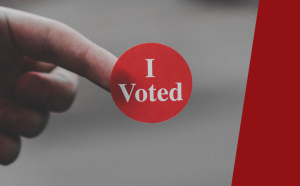
by Dan | Jul 22, 2020 | Uncategorized
 As the Yale Law & Policy Review argued in a 2016 essay, voting ought to be considered a form of speech, which would inherently tie it to citizens’ First Amendment freedoms. However, when the country is facing an unprecedented public health crisis, what do voting rights look like in the coronavirus era?
As the Yale Law & Policy Review argued in a 2016 essay, voting ought to be considered a form of speech, which would inherently tie it to citizens’ First Amendment freedoms. However, when the country is facing an unprecedented public health crisis, what do voting rights look like in the coronavirus era?
More importantly: how can we collectively protect freedom of speech for all while navigating the political challenges and public health concerns that are likely to remain widespread and controversial leading up to the 2020 American Presidential Election?
Barriers to Voting (Before COVID)
Voter ID laws vary from state to state, but some restrictions have unintended consequences on individuals’ voting rights in some cases. For example, many out-of-state college students are unable to vote at all if they can’t access vote-by-mail from their home states and their college student ID cards aren’t considered sufficient proof of identity to access their ballot at the polls.
Voter ID laws can also negatively impact elderly, low-income and rural voters who have limited access to government identification due to transportation issues, lack of affordability (especially for seniors with fixed incomes), and distance between their homes and offices where they must go in-person to receive an ID card.
Other barriers to voting access that currently exist in the U.S. include:
Is Voting by Mail a Solution?
According to the National Conference of State Legislatures, voting by mail has been shown to increase voter turnout due to its convenience and flexibility (since people don’t need to take off work to go to the polls). As the Military Times points out, voting by mail has been standard practice for U.S. military members and their families since the Civil War, and the practice is used for all elections in Colorado, Hawaii, Oregon, Washington and Utah.
NPR reported on June 4, 2020 that voting by mail is generally a bipartisan issue — 24 states with Democratic governors and 22 states with Republican governors allow some form of mail-in voting currently — and an April 2020 poll found 70% of Americans are in favor of voting by mail.
Multiple high-profile politicians who are publicly opposed to voting-by-mail at the moment have voted by mail themselves in the past, and an analysis of vote-by-mail states in 2016 and 2018 conducted by the nonprofit Electronic Registration Information Center found just 372 possible cases of double-voting or someone voting for a deceased person, out of more than 14.6 million votes cast (this translates to a 0.0025% risk of voter fraud).
In the wake of voters having to wait as long as 6+ hours to access the polls in Georgia’s primaries in 2020 and other fears surrounding coronavirus spread that contributed to disastrous results in Wisconsin’s primary (including sorely understaffed polls and 50+ voters/poll workers who tested positive for COVID-19 after the primaries), voting by mail could be a viable option for protecting citizens’ rights to vote in the 2020 Presidential Election without risking their health or safety in the process.
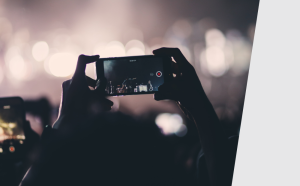
by Dan | Jul 8, 2020 | Uncategorized
 2020 has become quite an interesting year for First Amendment advocates, and along with major societal unrest — not to mention the ongoing global pandemic — comes greater public interest in legal rights and restrictions, particularly where recording laws are concerned.
2020 has become quite an interesting year for First Amendment advocates, and along with major societal unrest — not to mention the ongoing global pandemic — comes greater public interest in legal rights and restrictions, particularly where recording laws are concerned.
To determine what your rights are in terms of who, what, where, and when you record, let’s examine the present laws, current events, and notable examples of public recording laws:
Recording Civilians
Many aspects of recording laws are up to individual states to determine, which makes it difficult to analyze 50 different approaches to public privacy. However, you can generally record in public as long as there’s not an expectation of privacy.
Is there something you shouldn’t record, even though you can? As Consumer Reports points out, you want to avoid videotaping peaceful protesters, which could potentially make them targets later on. However, you should record people breaking the law (as long as it’s safe to do so) because footage could provide valuable proof in a court of law in the future.
So what about location? In 2019, the judge for Sheets v. City of Punta Gorda upheld an earlier court’s decision pertaining to recording in government buildings. Whereas public streets are considered “traditional public fora” (for First Amendment purposes), government buildings are considered “nonpublic fora” where speech may be somewhat restricted in the prohibition of recording, for instance.
Recording Police Activity
Some people mistakenly believe you’re not allowed to record the police, but the Electronic Frontier Foundation correctly explains how this is guaranteed by the First Amendment (even if an officer tells you to stop recording, as one did to an Uber driver in 2017 without realizing the driver was a criminal defense attorney who very much understood his rights; the Sheriff’s Department involved in the matter in North Carolina responded, “not only does the Sheriff agree that it is legal to record encounters, he invites citizens to do so”).
The Municipal Research and Services Center also points out:
Citizens lawfully present at the scene of police activity may express verbal criticism—even profane and abusive criticism—towards police officers carrying out their duties so long as the citizens do not physically touch the officers or issue threatening statements or movements.
In other words, the First Amendment generally protects protesters’ rights in police encounters, so long as they remain nonviolent in their actions and nonthreatening in their language.
Without video footage of George Floyd’s death, there might have never been such widespread protests and murder/manslaughter charges against the police officers involved. Without video footage of Buffalo, NY police pushing over a 75 year-old man and leaving him to bleed on the ground, the officers might not have been investigated and suspended without pay.
There is an entire Google Spreadsheet with videos of police brutality during the George Floyd protests, which would not have been possible if people didn’t record police activity at protests. For more information on public recording laws and tips for filming protests and suspected police abuse, check out Witness.org’s helpful guide.

by Dan | Jun 24, 2020 | Uncategorized
 Freedom of assembly has arguably been one of the more under-appreciated rights outlined in the First Amendment of the Constitution, but it’s certainly on full display in protests around the world in 2020.
Freedom of assembly has arguably been one of the more under-appreciated rights outlined in the First Amendment of the Constitution, but it’s certainly on full display in protests around the world in 2020.
As the Library of Congress explained,
The Supreme Court of the United States has held that the First Amendment protects the right to conduct a peaceful public assembly.[3] The right to assemble is not, however, absolute. Government officials cannot simply prohibit a public assembly in their own discretion,[4] but the government can impose restrictions on the time, place, and manner of peaceful assembly, provided that constitutional safeguards are met.[5] Time, place, and manner restrictions are permissible so long as they “are justified without reference to the content of the regulated speech, . . . are narrowly tailored to serve a significant governmental interest, and . . . leave open ample alternative channels for communication of the information.”[6]
Around the world, the freedom to peacefully assemble is recognized in a majority of countries, though Sweden and the U.S. require a permit or some form of authorization for organized protests, whereas other countries typically require only advance notification.
Given the importance of protests and the public health dilemmas associated with large gatherings of people in the year 2020, let’s explore some of the common myths and misconceptions surrounding Americans’ right to peacefully assemble in public:
Myth #1: “You Always Need a Permit”
The real answer is much more complicated, as the ACLU points out. You do not need a permit if you’re planning to march in a way that doesn’t block pedestrian or automotive traffic (e.g., smaller groups marching on sidewalks), but you’ll need a permit if you’re planning a larger protest requiring potential street shutdowns and/or audio equipment for a crowded rally.
Protest permits typically cannot be denied simply due to controversial or unpopular opinions expressed by protesters, though public safety has been cited as a common reason for dispersing protests (especially during a pandemic). There may be a fee involved for the permit, but the ACLU further explains that you should be able to get the fee waived if it’s too cost-prohibitive.
Myth #2: “You Can’t Record Certain Public Spaces and Figures”
States have different laws about using an audio/visual recording device in public places, but there are general legal protections for recording in public, including:
- Police officers cannot demand that you stop recording and/or delete recordings or photos on your phone unless you are genuinely interfering with their law enforcement duties.
- You are able to record people in public unless there’s a “reasonable expectation of privacy.”
- There may be a difference between types of content that are protected, depending on your state (visual is typically legally protected, but audio might be more of an issue).
Myth #3: “Peaceful Protests Don’t Lead to Real Change”
As Global Citizen pointed out, there have been many nonviolent protests that have spurred change around the world, with one of the most fascinating example being how Estonians collectively sang their way out of the Soviet Union beginning with the “Singing Revolution” in 1988.
2020 is truly a historical moment for the United States, and we are closely watching the many major news stories pertaining to civic activism and First Amendment rights. Time will tell what societal changes arise from the George Floyd protests and other legal battles over civic liberties like publicly congregating for protests or religious services.
In the meantime, First Amendment Voice has you covered with the latest updates on the protests, free speech laws, state of religious freedom in the midst of a public health crisis, and so much more.
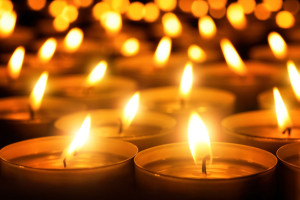
by Dan | Jun 10, 2020 | Uncategorized
 The First Amendment guarantees Americans’ rights to freedom of religious expression and practice, but does the First Amendment’s protections go as far as ensuring people are legally permitted to congregate in-person, particularly during a public health crisis?
The First Amendment guarantees Americans’ rights to freedom of religious expression and practice, but does the First Amendment’s protections go as far as ensuring people are legally permitted to congregate in-person, particularly during a public health crisis?
This question remains to be concretely answered by the courts, but we’ve already seen several religious institutions challenging states’ stay-at-home orders and/or social distancing regulations by either filing a lawsuit or opening their doors to congregants without the state’s permission. In one tragic incident, a pastor dismissed the pandemic as “hysteria” and later died of Covid-19 after contracting it at Mardi Gras.
The problem with in-person services during a pandemic, Vanderbilt University’s infectious disease expert William Schaffner said in an interview with Business Insider, is that “people congregate, hug each other, exchange stories, and thank you very much, the virus is going to go from me to you.”
Of course, as the New York Times points out, a vast majority of religious leaders and institutions are taking the pandemic seriously by hosting virtual services, connecting with congregants over video conferencing apps like Zoom, leading remote reading groups, and seeking out ways to positively impact their communities during this time.
So if most other churches, synagogues, mosques, temples and religious institutions are capable of delivering their services remotely, why are there so many First Amendment issues coming up in the media and courts? Let’s examine what’s going on (as of June 2020):
Court Challenges Against States & Governors
Religious leaders from across the country have varied in their responses to state-imposed restrictions on large group gatherings, but those that have engaged in legal battles with state governors haven’t been too successful in court so far.
For instance, South Bay United Pentecostal Church and its leader Bishop Arthur Hodges filed a request to exempt their organization from California Governor Gavin Newsom’s emergency state-at-home orders. The request was declined in a 2-1 decision by the 9th Circuit Court of Appeals late on May 24, with the dissenting judge – President Trump appointee Daniel Collins – writing,
By explicitly and categorically assigning all in-person ‘religious services’ to a future Phase 3 — without any express regard to the number of attendees, the size of the space, or the safety protocols followed in such services — the State’s Reopening Plan undeniably ‘discriminate[s] on its face’ against ‘religious conduct.’
Similar challenges have occurred in states like Oregon, where a judge briefly overturned Governor Kate Brown’s stay-at-home orders (before the state successfully requested a reinstatement of the restrictions from their Supreme Court a few hours later). Notably in the case of Oregon, most of the legal challenges have come from religious groups but the actual legal challenge wasn’t grounded in First Amendment principles as you might expect; the challenge arose from Oregon state laws requiring a governor to get Legislature permission for extending emergency orders beyond a 28-day timeframe.
There are also several other examples of religious leaders and institutions in nearly every other state legally challenging or civilly protesting their state-imposed social distancing and/or shelter-in-place restrictions. Time will tell how those legal challenges hold up; it may take a U.S. Supreme Court decision on this matter before a true precedent is set.
International Religious Services During Covid-19
Places of worship around the world have also been struggling to cope with changes imposed by their nation’s leadership, not to mention adapting to the public’s preferences for virtual or in-person services.
Several megachurches and other large religious institutions have been hotspots for coronavirus outbreaks (where the “patient zero” is often referred to as a “superspreader”), though it’s not always limited to large institutions of faith, as these case studies demonstrate.
The problem with “superspreaders” is that they may be responsible for as many as 80% of Covid-19 cases, and resuming religious services too early without rigorous testing and contact tracing efforts could lead to a spike in cases in vulnerable communities.
In Germany for instance, a single church service on May 10 was linked to over 100 new cases of coronavirus within two weeks of the service. Another example from South Korea in February found a woman infected at least 40 people at her church after she refused to get tested for coronavirus (she had a fever but hadn’t traveled abroad).
Eid is also a potential superspreader concern for many Muslim communities and their leaders, as we’ve seen from the Muslim Judicial Council of South Africa’s statement requesting Muslims to celebrate Eid at home instead of prayers and cemetery ceremonies with friends and family.
What’s Next for the First Amendment and Our “New Normal”?
We’ll have to wait for a decision from the U.S. Supreme Court before we can determine whether prohibiting in-person gatherings legitimately constitutes a violation of citizens’ First Amendment rights to freedom of religious practice and assembly.
While there are a few examples of religious institutions and their leaders seemingly not prioritizing public health by demanding a swift return to normal, in-person gatherings, it’s important to remember that a vast majority of spiritual and religious leaders are doing everything they can to keep their members safe (some institutions have already announced they won’t hold in-person services until 2021 at the earliest).
It’s not easy balancing public health concerns with religious liberties, so this will likely remain a controversial issue in our public discourse for many months (or even years) to come.

 Have you heard of the Open Technology Fund (OTF)? It’s a U.S.-based organization promoting Internet freedom around the world by offering resources that mitigate authoritarian regimes’ attempts to censor the Internet and unethically and/or unlawfully surveil people online.
Have you heard of the Open Technology Fund (OTF)? It’s a U.S.-based organization promoting Internet freedom around the world by offering resources that mitigate authoritarian regimes’ attempts to censor the Internet and unethically and/or unlawfully surveil people online.






